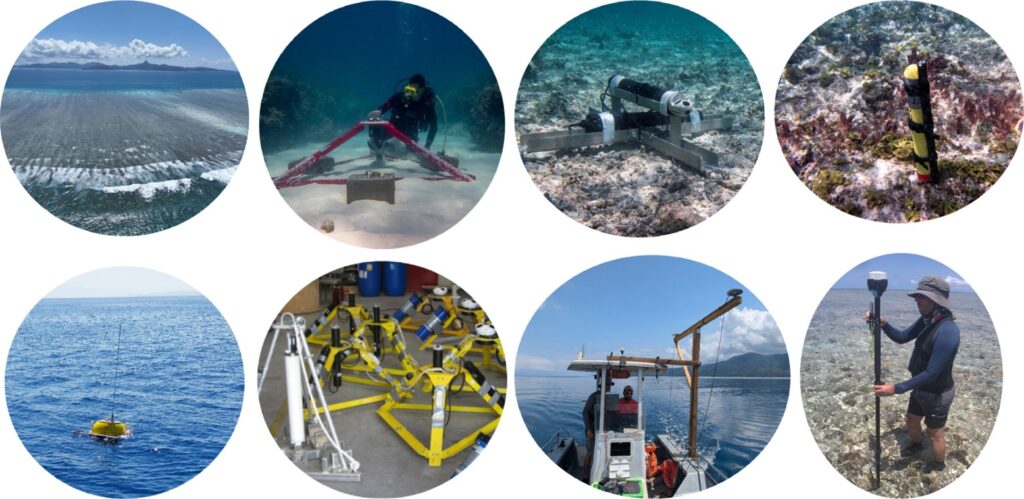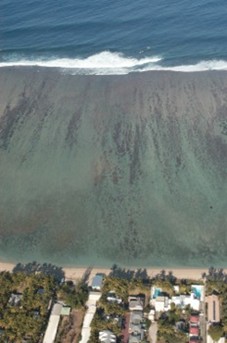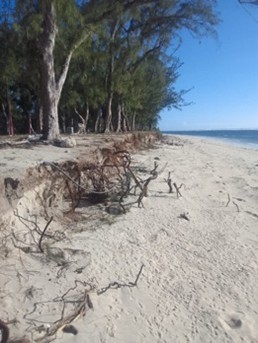Reconstruction work on marine flooding associated with tropical cyclones and distant-source swells is being carried out in Mayotte and Réunion. In addition, the impacts of intense cyclonic events are being studied (e.g., Chido in Mayotte) and a support to local decision-makers is provided to strengthen crisis management capacities (Saint-Paul). Coastal adaptation policies and measures are being analyzed and assessed, with a focus on the Nature-based Solutions deployed along the western coast.
Mayotte
Mayotte, a French overseas department in the northern Mozambique Channel, offers a unique natural laboratory to investigate reef–wave–coast interactions under changing climatic and oceanographic conditions. The island is surrounded by one of the largest enclosed lagoon–barrier reef systems in the world, whose geomorphological configuration strongly modulates wave transformation, energy dissipation, and coastal hydrodynamics. Seasonal reversals of swell direction, combined with episodic cyclones and storm surges, generate highly variable forcing conditions, while ongoing sea-level rise amplifies the risks of submersion and shoreline erosion. The reef structure and associated ecosystems play a critical role in attenuating wave energy, yet their protective capacity is threatened by both global change and local anthropogenic pressures. Mayotte’s rapidly growing population and concentration of infrastructure in low-lying coastal areas heighten socio-environmental vulnerabilities. This site thus provides a strategic context for integrated physical, ecological, and socio-political analyses of coastal risks and adaptation pathways in tropical island settings.

La Réunion

Aerial view of the FUTURISKs studied site
La Réunion is a volcanic island in the southwestern Indian Ocean, 800km east of Madagascar, with young fringing reefs (approximately 8,000 years old) spread across a discontinuous belt of 25 km along its west coast, covering a total area of 12 km². With a reef index of 0.005, the reefs of La Réunion represent the smallest coral area in the French overseas departments (by comparison, that of Mayotte is 4). Their shallow width (< 500 m) and depth (~ 1m) make them a natural laboratory on a human scale for studying the role of reefs as shore protector and investigate reef-waves interactions. The island is exposed to occasional extreme events, such as cyclones (e.g. Garance in 2025, Belal in 2024) or strong seasonal southern winter swells (e.g. June 2022, when significant wave height reached 7m), which threaten the reefs, reducing wave energy attenuation and causing submersion and coastal erosion. Reef health, biodiversity, biogeochemistry, physics, waves propagation across reef and beach morphodynamics are then long term monitored in the largest reef unit (8km long, 500m wide). This site is recognized by the French research infrastructure for Coastal Ocean Observation ILICO as an instrumented site for studying reef resilience and resistance face to anthropogenic pressures, meteorological and oceanographic forcings under changing climate.

Dune erosion following cyclone Belal in 2024
